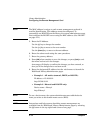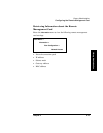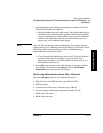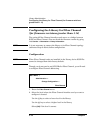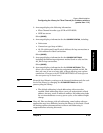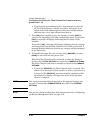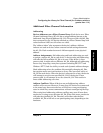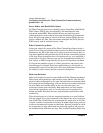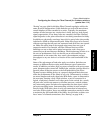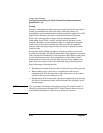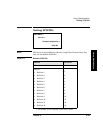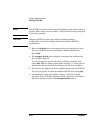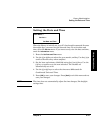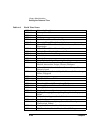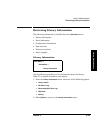
4-22 Chapter 4
Library Administration
Configuring the Library for Fibre Channel (for firmware revisions
greater than 1.14)
Ports, Nodes, and World Wide Names
All Fibre Channel devices have globally unique identifiers called World
Wide Names (WWN) that are assigned by the manufacturer and
registered under IEEE. Fibre channel devices are split into ports
(connection points) and nodes (sources and destinations of transmitted
data). All ports and nodes of a device will have unique WWNs that are
used to validate AL_PAs. The user cannot configure the WWN, but the
WWN can be used to track devices on a loop.
Fibre Channel Loop State
Loop state reports the status of the Fibre Channel loop from a device’s
point of view. A loop up condition indicates that the Fibre Channel device
obtained an AL_PA on the loop and is ready to send and receive data. A
loop down condition indicates that the device did not successfully connect
to the loop. Fibre channel devices will continuously try to re-establish a
connection to the loop. The user may use the management facilities of a
hub, switch, or HBA to help identify the cause of a loop down condition.
If a loop down condition occurs, it is likely that device operations have
been disrupted or aborted. Some host applications may not be able to
automatically recover from this state. Also, some hubs and switches have
the ability to add or remove devices to prevent disruptions.
Hubs and Switches
Hubs and switches are used to create different Fibre Channel topologies.
Hubs create arbitrated loops, and switches create fabrics. The external
physical cable configuration is the same for both hubs and switches. Both
use a physical star configuration, with one device at the end of each leg of
the star. Hubs and switches differ in the way that their ports are
connected to other ports internally. Hub connections are less complex
than switch connections, and, as a result, hubs are less expensive to
design and build. Switches, however, provide higher performance and
connectivity.
Fibre channel ports on a hub are connected together in a serial fashion,
with the output of one port connected to the input of the next, creating a
loop. Each Fibre Channel device is connected to a single port on the hub
in order to make a connection to the loop. To make larger loops, ports on
a hub can be connected to ports on other hubs. Because all ports on a hub
are connected in a loop, when hubs are connected together, all ports on
the combined hubs still form one loop. This is called cascading hubs. (See



